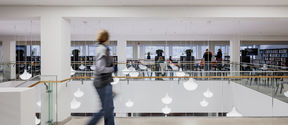What is anxiety?
Anxiety means inner restlessness and unease, and it is usually connected to physical symptoms such as a racing heartbeat, trembling, stomach symptoms, sweating or dizziness. Short-term anxiety is natural phenomenon and does not mean you have an anxiety disorder. Anxiety disorders are disorders where anxiety is long-term and disproportionate to the situation. Anxiety may vary in intensity or grow depending on the situation. Often people who have felt anxious in a given situation start to avoid that situation. However, avoidance may make the symptoms worse and limit the person’s life.
Social anxiety refers to a condition in which the person is afraid of being the focus of attention or embarrassing themselves in the eyes of others, and often ends up avoiding situations where groupwork or performing is required. The student may avoid speaking in class or may drop out of a course for fear of having to give oral presentations. Establishing new friendships or entering into new personal relationships may be challenging due to avoidance of social situations or difficulties in starting conversations. Some of the difficulties brought on by social anxiety are the result of a vicious circle where the person continues to avoid social situations and therefore does not gain the social skills needed in those situations.
In generalised anxiety, anxiousness varies in intensity and is not related to any particular situation or fear but is generalised to a free-floating state. In such cases, worry or concern may also have to do with different aspects of normal life.
What is performance anxiety or nervousness?
To a certain extent, performance anxiety or nervousness is a natural part of life: most of us are nervous sometimes. Nervousness becomes a problem when it complicates or hinders performing everyday tasks or studying. Nervousness may be associated with social situations in general or, for instance, with public speaking or eating in front of other people.
Performance anxiety, or stage fright, is particularly common among university students. The person suffering from stage fright or nervousness does not benefit from being given an easy way out of the assignment. Instead, awareness of the acceptability of nervousness, and providing the student with alternatives and support is more useful.








